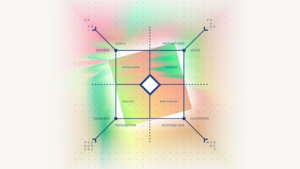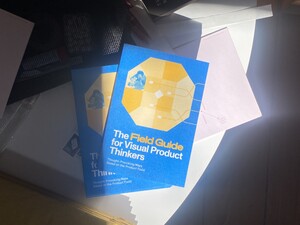Virtual Reality Is Made for Strategy Work
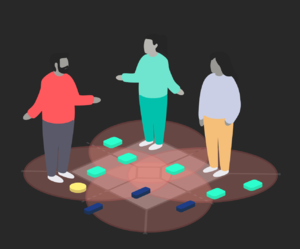
Yes, that was my very first thought when I put on an Oculus for the first time: VR is just made for strategy work!
The way VR enables immersive experiences, how it allows us to sense abstract context with our minds and bodies. How it „materializes“ information, and concepts, and forces so we can „touch“ them. How it allows people from everywhere to come together and get social beyond navigating a wall of video windows …
… that is just mind-blowing, and heart-opening.
Especially if we consider the progress that is being made both in general (exponential development in tech) and more specifically in regard to Apple entering the VR race this year.
I am imagining co-workers gathering in virtual spaces to create, experience and explore a shared understanding of all things relevant for strategy creating and execution.
From the top of my mind, I can think of 8 experiences that could help us develop a collective sense of what's going on around us — which is mission critical in strategy creation. Specifically, these experiences would allow us to ...
- adopt different perspectives
- sense the depth of field
- see beyond what is in front of us
- create earthrise moments
- experience different paces
- mind the balance
- feel the forces at play
- clear the fog
Let's take a closer look at those:
Adopting Different Perspectives
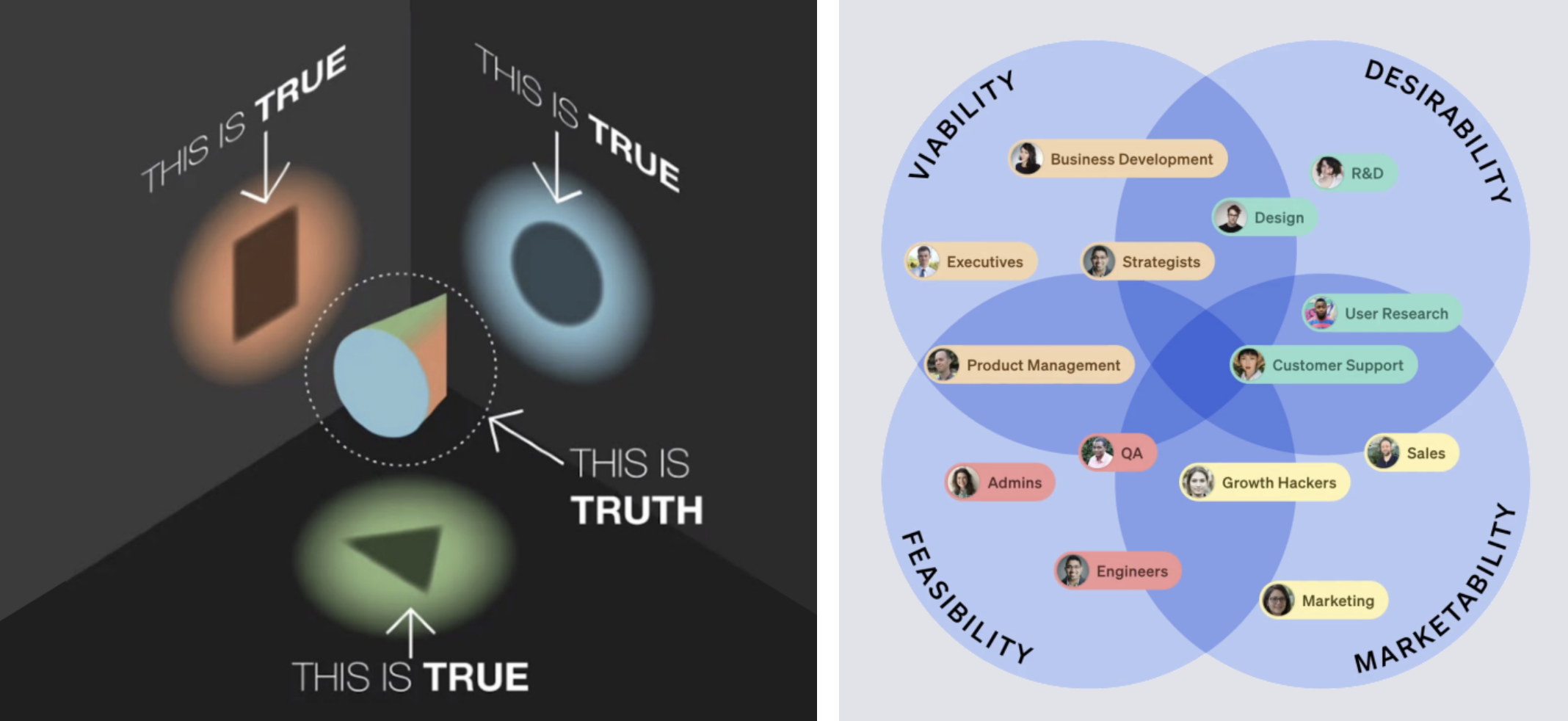
If we want to understand a multi-faceted situation, we need to look at it from different perspectives and then superimpose these to create a complete and realistic picture of the situation. In an on-site workshop, this happens by mapping thoughts and knowledge from different people on a two-dimensional whiteboard.
In VR, we can use the space to walk around and take a new point of view we didn’t have before. For example, a solution-driven software developer could adopt the perspective of a problem-driven designer, and vice versa. This not only leads to a better understanding of the situation, it also helps people from different disciplines connect.
Sensing the Depth of Field

We know that developing businesses and products is a team sport. But the team is usually way larger than we are aware of. Very often, we only regard the people we work with directly as team members. Yet, without the attention and dedication of colleagues that are further away from what we consider product development, our product will likely fail.
In VR, we can use the space to make everyone aware of that. For example, we invite colleagues from supporting departments such as Legal or HR and see how they are, in fact, an integral part of the (extended) team we need for our business or product to succeed. Although positioned some distance away, everyone (including themselves) can see how they are an integral part of the strategic context.
Seeing Beyond What Is in Front of Us
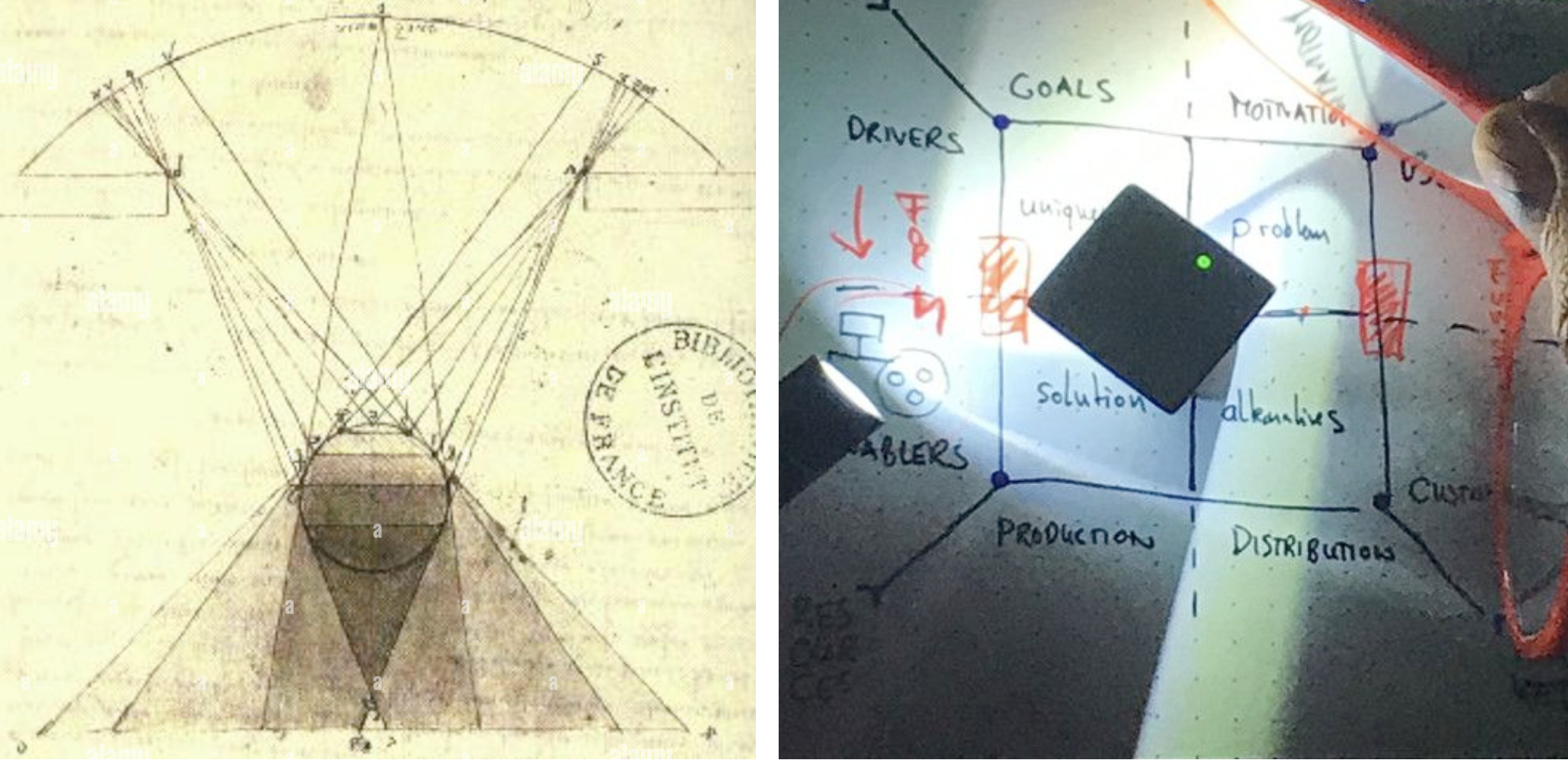
In real life, when we look at an opaque object, we can’t see what’s behind it. It’s a bit like we can’t see the dark side of the moon or the stars behind it. In a sense, the same is true for a center of attention in a corporate environment. Only if we change our position can we see what’s going on on the other side of that center. For example, when executives look at a new product idea, all they see is how it fits into the bigger picture. At this point, they might not even see the actual customers and distribution challenges. On the other side, sales managers mainly see their current customer base and the distribution challenges when they look at the idea from their point of view — they can’t see what the executives over there can see.
In VR, we can use the space to make everyone aware of that. For example, we can remove the shiny object in the middle to clear the view to the other side. Or we put up virtual mirrors that allow us to look around the corner.
Creating Earthrise Moments
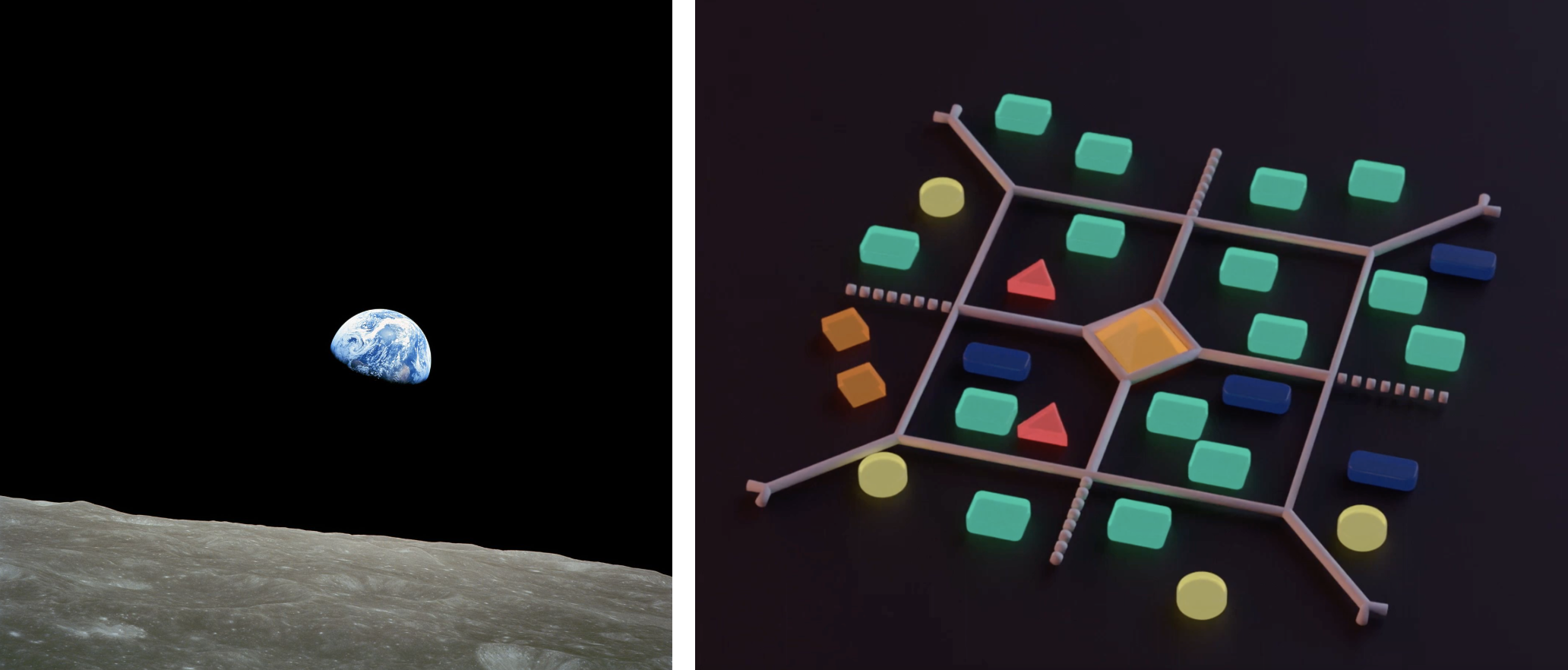
Let’s face it, we spend most of our time heads down, doing operational stuff. We hardly ever zoom out to see the big picture from above. Yes, we all have an idea of the wider context. But for one, it’s mainly our first-person singular view. For another, the flight levels are very different depending on our role in the organization.
In VR, we can use the space to rise above together. And not just a few people that usually participate in a strategy workshop. No, we can invite everyone in the company to join that special moment, when we see our how the organization operates from high above. Like the Apollo 8 crew, when they saw an earthrise for the first time.
Experiencing Different Paces

Every strategy triggers some sort of change. But it’s important to know at what level we expect the change to happen. This is what the concept of Pace Layering is about. For example small UI changes. We all know they can take forever. That usually occurs when infrastructure changes need to happen first. Or worse, if politics is involved.
In VR, we can use the space to make everyone aware of that. Depending on the involved layers of a desired change, we could reduce speed and freedom of movement in the space. This gives us a sense of the pace we can expect when pursuing our strategy.
Minding the Balance
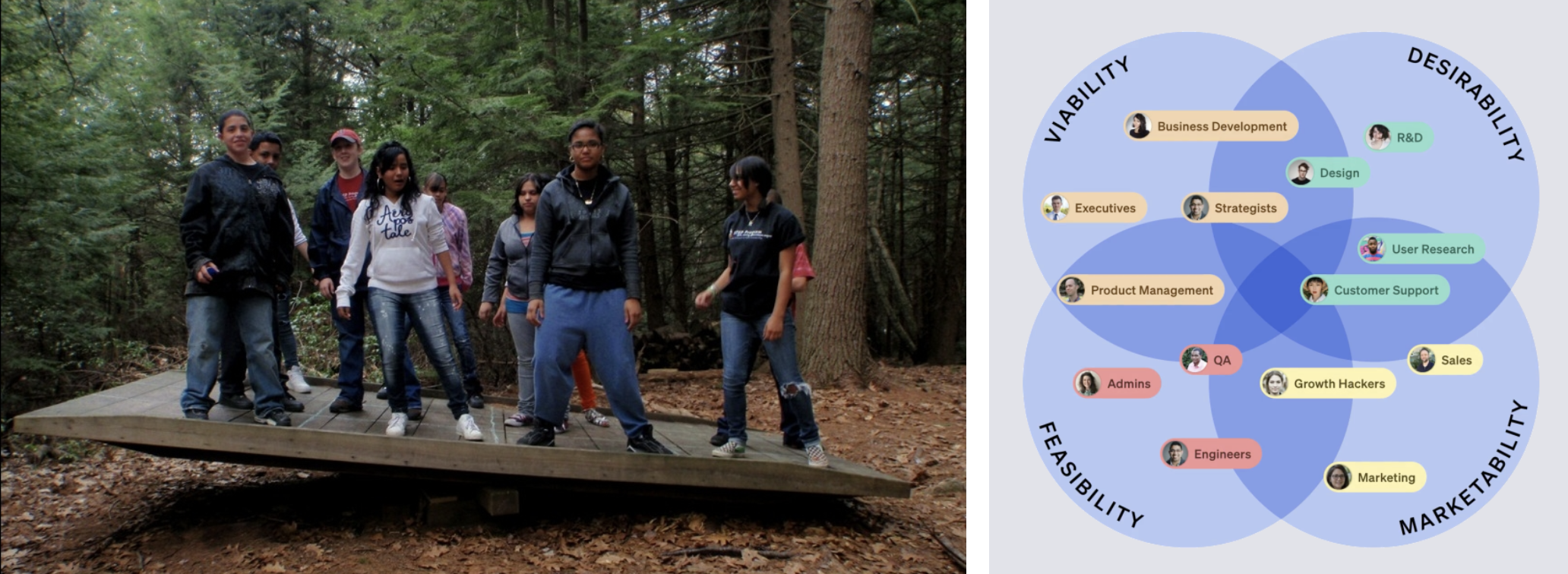
For a product to succeed, all key risk areas must be addressed: desirability, marketability, feasibility, and viability. If you ignore one (or more) of these, product growth loses its balance.
In VR, the Product Field could function as a huge balance board. Everyone would be postioned according to their roles, and from the resulting slope the participants would probably realize that roles are missing or under-represented.
Feeling the Forces at Play

Products are built on the inside and need to reach people who buy and use the product on the outside. As a matter of fact, this is never an easy flow. There are always forces at play that push the product back. With Field, teams can visualize these forces with an intractive Force Field, and looking at it together is a great shared moment already.
In VR, though, the participants could enter the Force Field and "feel" how the forces change when bockers are removed or missing pieces are added.
Clearing the Fog
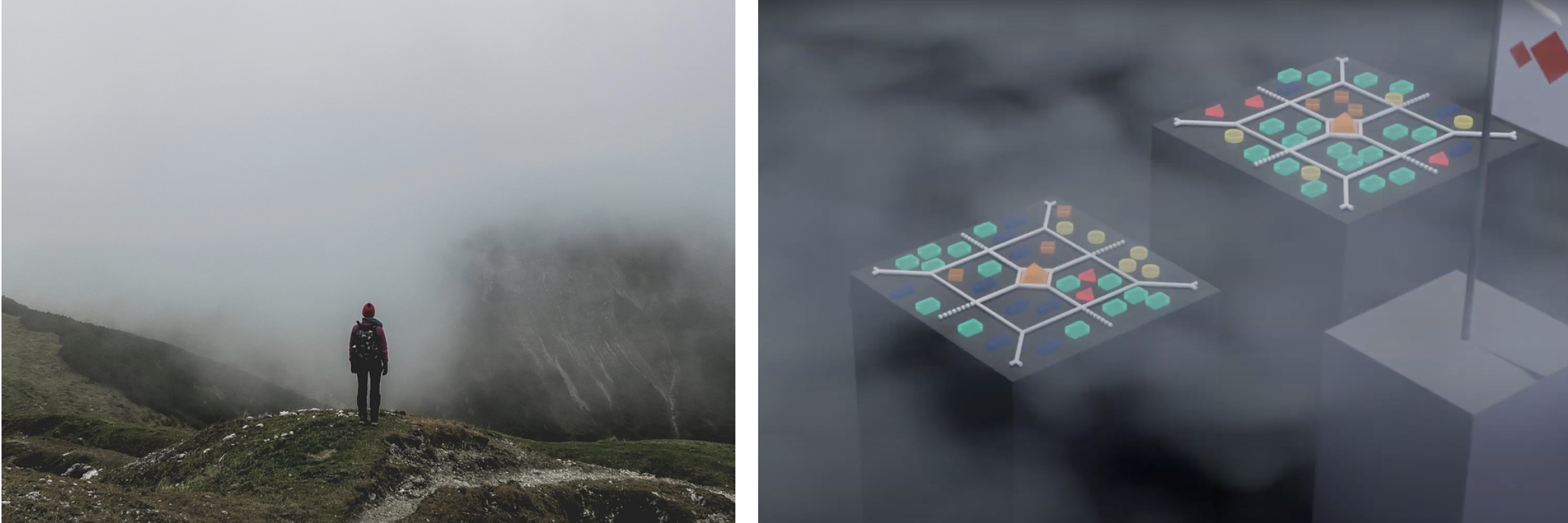
When asked about the key job of product management, providing clarity is always in the top 3. That is because product development is always complex and messy, which makes it very hard to create moments of clarity.
In VR, we might be able too use virtual fog to create a state of unclarity. Only to show how it feels when the fog clears up.
A Final Remark
Of course, some of these experiences could also be created in an IRL environment — as long a the organization manages to bring together a (large and diverse) group of people in a room that is big enough and well equipped. That is always really powerful. In VR, though, these things are possible even if participants are scattered across the globe. Plus, it allows for some extra experiences that are simply not possible in the physical world.
So, what do you think?
About strategy workshops in VR? Or about strategy creation in general? What are your ideas? Your challenges? Would you like to discuss those? Let's talk ...


